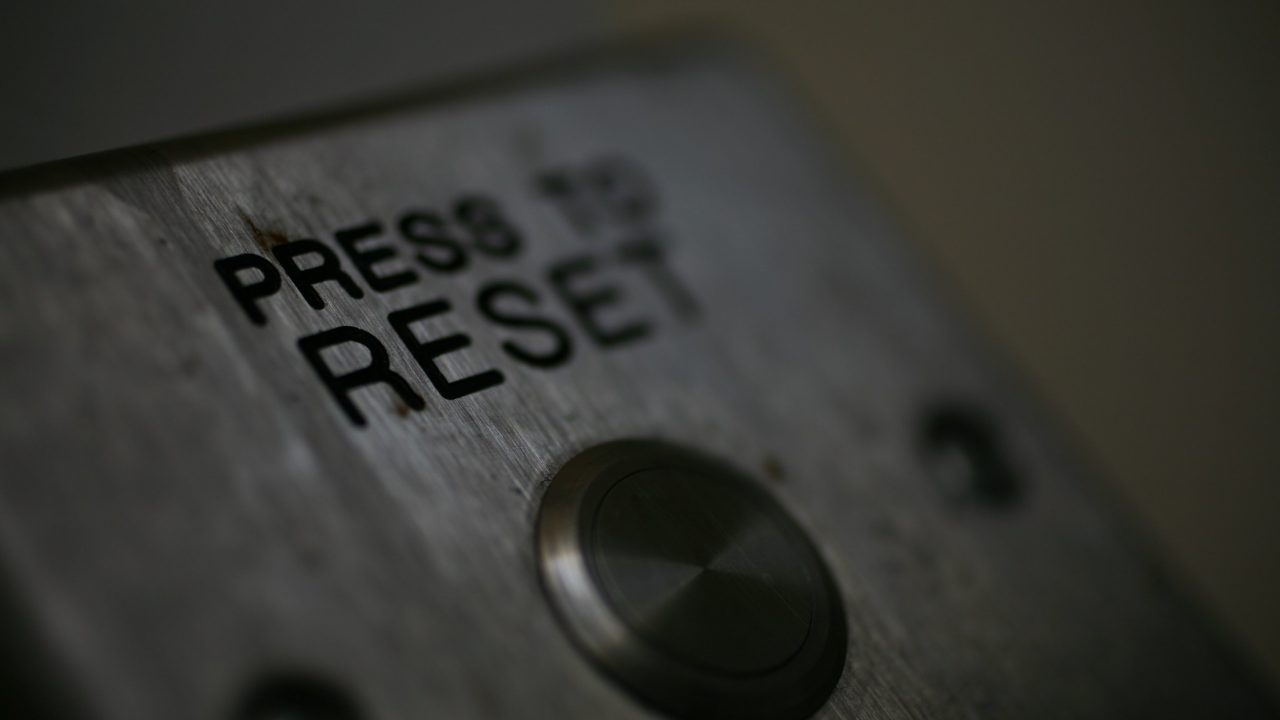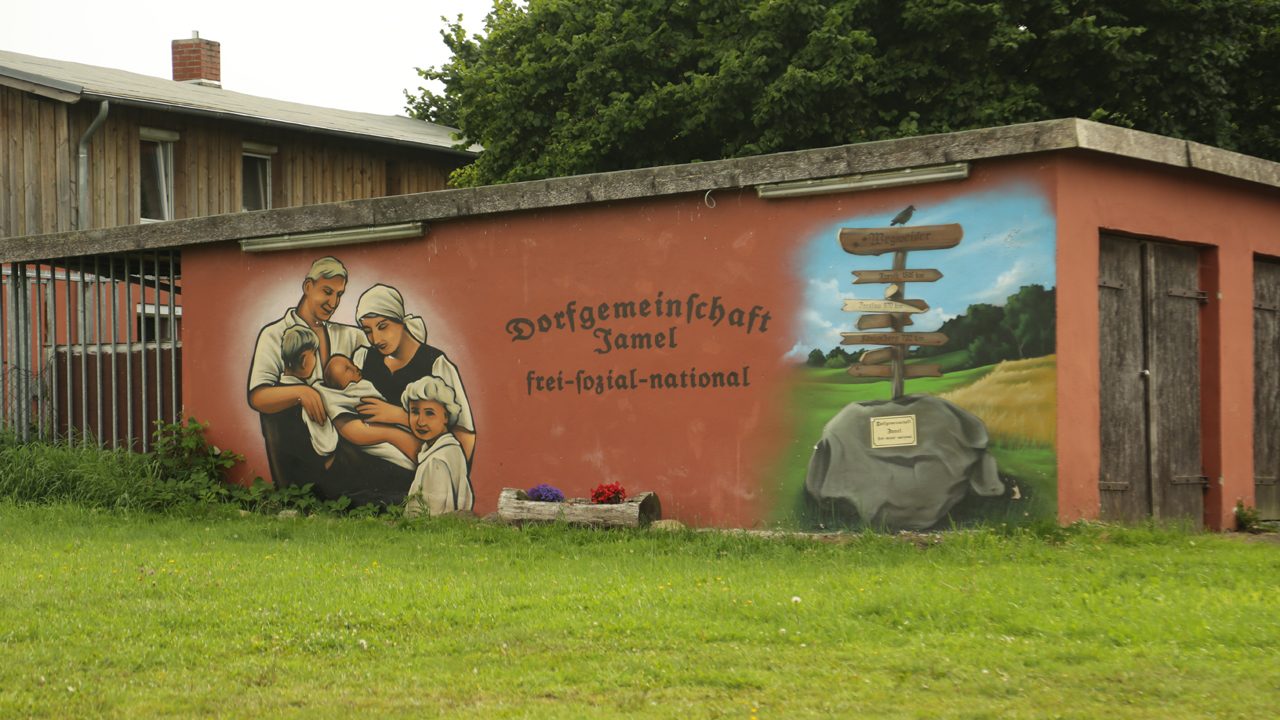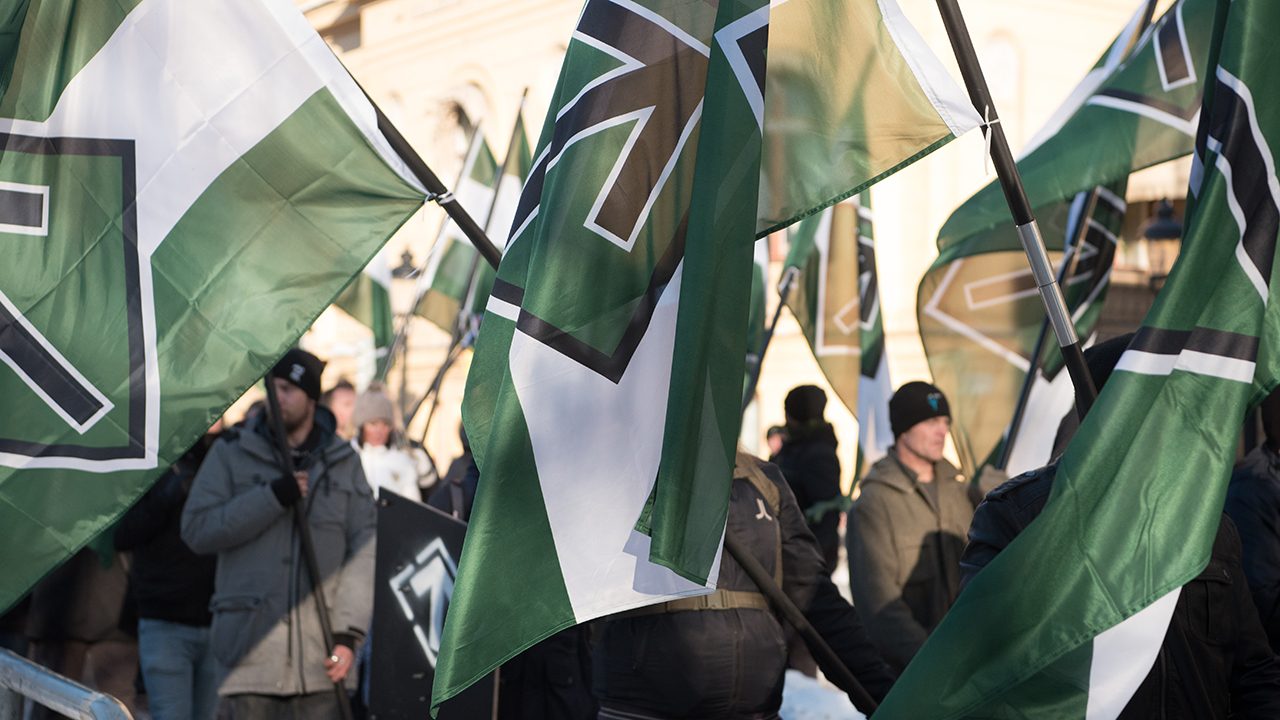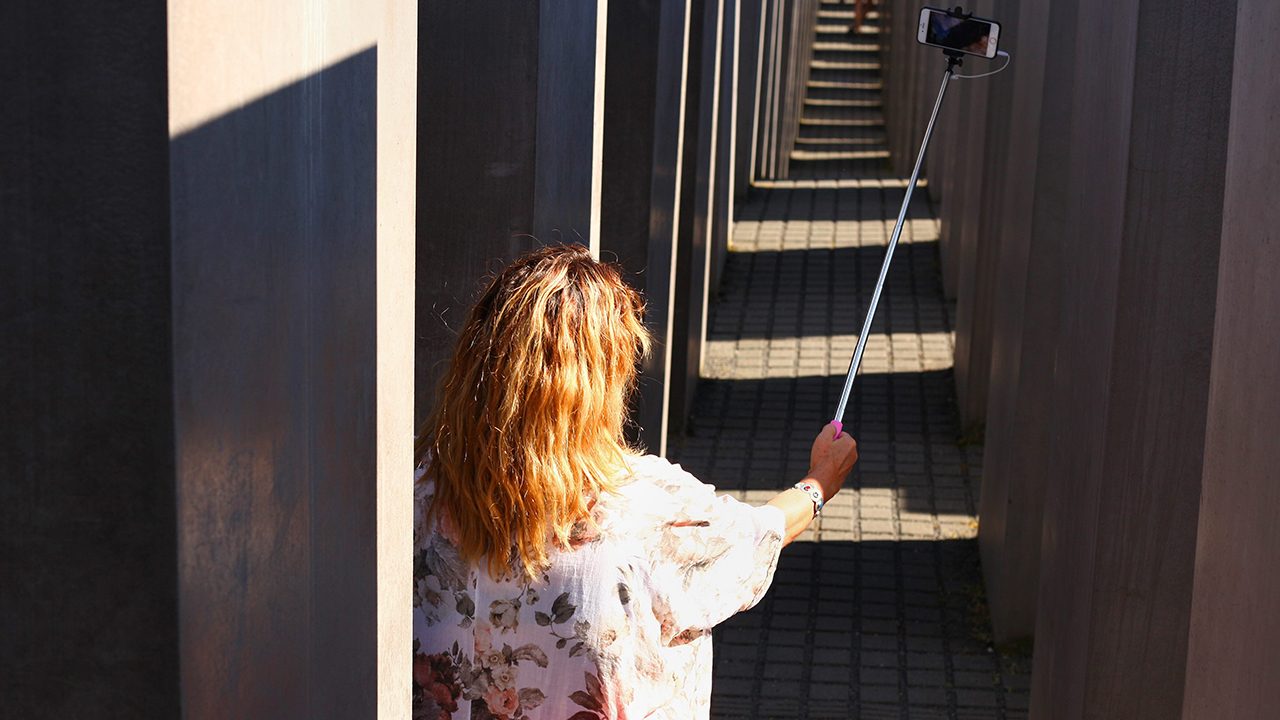
When the Auschwitz concentration and extermination camp was liberated by the Soviet Red Army 76 years ago on 27 January 1945, the soldiers photographed the scenes they found there. The camp still held around 7,000 prisoners, with the rest having been murdered or sent west on a death march. The black-and-white photos of starving detainees in striped uniforms, of piles of glasses and artificial limbs, of mass graves and barbed wire, were soon seen around the world. Today, the camp watchtowers and railway tracks serve a different purpose: as scenery for selfies uploaded to Instagram. This is the dilemma faced by our culture of remembrance in today’s digital age. While it remains important to document the Shoah on social media, it is also a challenge.
Shortly after the end of World War II, the then General of the Army Dwight D. Eisenhower, who would go on to become president of the United States, issued orders for the crimes of the Nazis in the concentration camps to be documented in photographs and on film. Eisenhower is famously said to have written a letter stating that he visited concentration camps in order to be able to give first-hand evidence of their existence if, in future, a tendency develops to dismiss the charges against the Nazi regime as mere “propaganda”. He believed he could then report as an eye-witness on what he had seen.
Many have interpreted Eisenhower’s words as anticipating the emergence of Holocaust denial, though his account is interesting for another reason, too: the number of Shoah survivors is becoming smaller each year, and as a result we are losing our living link to the Holocaust. This is a problem, not least because according to a study conducted by the Jewish Claims Conference, almost two-thirds of young US Americans are not aware that six million Jews were murdered during the Holocaust. Just under half of those surveyed between the ages of 18 to 39 were not able to name a single concentration camp or ghetto. Almost one-quarter believed the Holocaust was a myth – or at least its magnitude had been exaggerated. Twelve percent had either never heard of the Holocaust or weren’t sure if they had heard of it. A further eleven percent believed the Jews were the ones who had instigated the Holocaust.
The results are only marginally better in Germany: according to a CNN survey conducted in 2018, around 40 percent of those surveyed between the ages of 18 and 34 knew “little” to “nothing” about the Holocaust. One in 20 Europeans had never heard about the systematic extermination of the Jews during the period of National Socialism. In France, the figure was one in five.
The Holocaust as a hologram
This is an alarming trend that could become worse as the number of eyewitnesses to the Holocaust dwindles in the coming decades. For Eva Berendsen, Head of Communication at the Anne Frank Educational Centre in Frankfurt am Main, this is nothing new: “In our field, we have asked ourselves the same question for years, if not decades: What will happen when there are no more contemporary witnesses? How can we tell these stories authentically from first-hand perspectives?” As Berendsen goes on to note, it is not as though every class of pupils from every generation has had the chance to speak directly to an eyewitness. “This approach would but the whole burden of responsibility on the shoulders of the few surviving witnesses to uphold the policy of remembrance.”
That said, there have been some digital solutions to counteract this trend: one example is the Survivor Stories Experience, an interactive exhibition installed in the Illinois Holocaust Museum & Education Center’s Take a Stand Center in Chicago in 2018. For this exhibition, 3D holograms of holocaust survivors tell their stories to younger generations. Visitors can ask the holograms questions, with the latter responding to key words and providing relevant answers.
The exhibition is based on the technology developed within the framework of the Shoah Foundation’s Dimensions in Testimony project. The foundation was established by director Steven Spielberg in 1994 while filming Schindler’s List and is now part of the University of Southern California. Since its inception, the Foundation has conducted 52,000 interviews with survivors. In Europe, these holograms can currently be found in Sweden as part of a touring exhibition titled “Speaking Memories – The Last Witnesses of the Holocaust”.
Despite these developments, digitising the Holocaust remains fraught with challenges. As the Jewish cultural critic Walter Benjamin might have phrased it: How, for example, can we establish an appropriate culture of Holocaust remembrance in the age of its mechanical reproduction on social media? “A lot can go wrong,” Berendsen concedes, and not without reason: the internet is rife with examples of problematic Holocaust remembrance.
Make-up and costumes
In summer 2020, a trend on the video portal TikTok made headlines: the so-called “Holocaust Challenge” had users of the platform (highly popular among young people) making themselves up to look like Jewish victims of the Shoah. Girls and young women in particular created short videos set to mournful violin music in which they wore “Jewish” clothing and make-up imitating bruises, and lip-synced fictitious stories of life in a concentration camp alongside text that popped up on screen. Their reports from the afterlife, from heaven, detailed their apparent deaths during the Holocaust, with one user stating that she died in the gas chambers in Auschwitz, and another claiming that she was making stew when the Nazis broke down her door and deported her to a camp.
Many users stated that by doing this they wanted to teach others about the Holocaust. The gambit backfired spectacularly, with the international press singling out the trend as tone-deaf. “It’s like getting dressed up for Carnival,” criticises Berendsen. “While the intentions behind it may be good, my worry is that by dressing up in an ‘amusing’ way, it isn’t bringing the general public or these young people into closer contact with the actual victims of the Holocaust.” Nikolas Lelle, head of the Amadeu Antonio Foundation’s “Education and Campaign Weeks Against Antisemitism” project, has similar misgivings: “It ridicules the victims of the Holocaust and romanticises their fate.”
Eva Berendsen und Nikolas Lelle point to a more successful example of a culture of remembrance on social media in the form of Eva.Stories, a digital Holocaust diary on Instagram and Snapchat that tells the true story of 13-year-old Hungarian Jew Éva Heyman. Heyman was deported to Auschwitz in 1944, where she was murdered. Her diary was posthumously published by her mother. Heyman’s fate has now been made available to a new generation on social media through photos, videos and hashtags. “I think this is a very exciting way for people to experience Eva’s story,” states Berendsen in praise of the project. “A lot of time and effort has gone into producing it. But although it is a true story, the Instagram format introduces many fictional moments.” Lelle also considers the project a success: “It is well thought out and instructive, and seeks to present these messages from the past through a new channel. It’s extremely important for people to address the Holocaust via these new forms of social media – and to do so in a way that is innovative.”
The project was launched in May 2019 by Mati Kochavi, an Israeli tech magnate and descendant of victims and survivors of the Holocaust, with the help of his daughter Maya Kochavi. A total of 400 employees and actors are involved in the multi-million-dollar project, with Eva.Stories now boasting more than 1.2 million followers on Instagram and just under 200,000 subscribers on Snapchat. Despite its success, the project has not been immune to criticism: in the Israeli newspaper Haaretz, the musician and teacher Yuval Mendelson said that it was in “poor taste”. He went on to predict that Eva.Stories could actually lead to more selfies being taken at the entrance to Auschwitz.
Auschwitz: a backdrop for photos
Concentration camps are a perennial favourite among selfie takers – which is a problem. Especially popular are the railway tracks and the ramp at Auschwitz II-Birkenau. As the Auschwitz-Birkenau Memorial and Museum has had to remind people on Twitter, there are better places to learn how to use a balance beam than on these train tracks. However, the museum has not gone so far as to ban photos outright, as it recognises that there are positive examples, and uses its Instagram page to collect photos by visitors that can serve an educational purpose. As the museum itself writes: a picture is worth a thousand words.
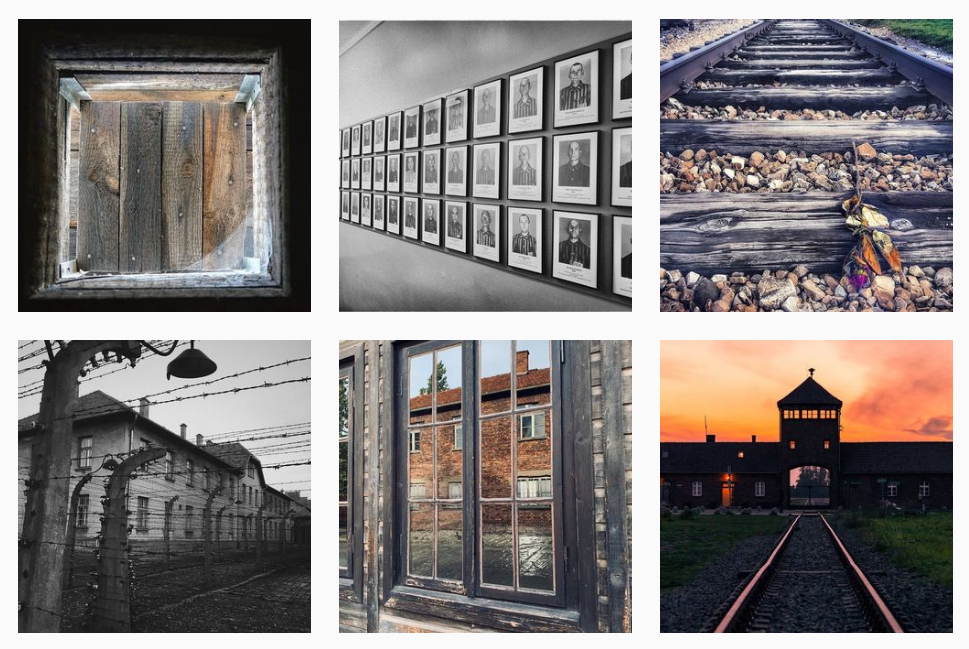
The Holocaust memorial in Berlin is also regularly used as scenery for selfies, a phenomenon that was addressed by the German-Israeli satirist and author Shahak Shapira in 2017 with his online project “Yolocaust”, which has since been taken offline. The artist spliced the protagonists of twelve especially tasteless photos – one featuring a person doing yoga, another juggling – into highly graphic scenes in concentration camps. Shapira stated that the website generated more than 2.5 million clicks in a very short space of time, with many international media outlets reporting on the project. It prompted widespread, not to mention important, discussion as to how memorial site visitors should behave and whether it is okay to take selfies at all in such situations. The project came under fire from elements of the Jewish community, which accused Shapira of having appropriated photos of Holocaust victims and turned them into a means for an end.
“It’s complicated,” concludes Berendsen. “There is no golden rule on how to engage with the Holocaust on social media. It’s easy to tread on other people’s toes – including within one’s own community – when it comes to the topic.” With that in mind, is it even possible to do justice to the Holocaust on social media? “We have to,” states Berendsen with resolve. “At the very least, we have to try.” The social media channels run by the Anne Frank Educational Centre – where Berendsen is the head of the communication department – publish informative photos and images detailing historic events surrounding the Shoah and questions about the National-Socialist past. “History lessons come with their own limitations, as we can see from the enthusiastic response garnered by our services on platforms such as Instagram.”

Online services are more important than ever now that the coronavirus outbreak has made it more difficult to visit these memorial sites. Nikolas Lelle is especially vocal in his support for the online work that institutions such as the Auschwitz Museum and the Sandbostel Camp Memorial in Bremen are doing: “The Covid-19 pandemic has ushered in a new wave of digitisation. Prior to this, there were relatively few German memorial sites that could be visited online. There are now virtual tour guides online, some of which use drones to allow virtual visitors to view the camps from above.” Lelle believes these memorial sites are in a good position to help cement remembrance of the Holocaust on social media, as they approach the subject in a more insightful way: “Understanding the history behind it is essential.” This is an important point to keep in mind, especially given Germany’s desire to present itself as the torch-bearer for remembrance. After all, addressing the Shoah via digital means does not automatically render it meaningful from an educational perspective – or necessarily mean it is respectful towards the victims.
This article was originally published in German.

